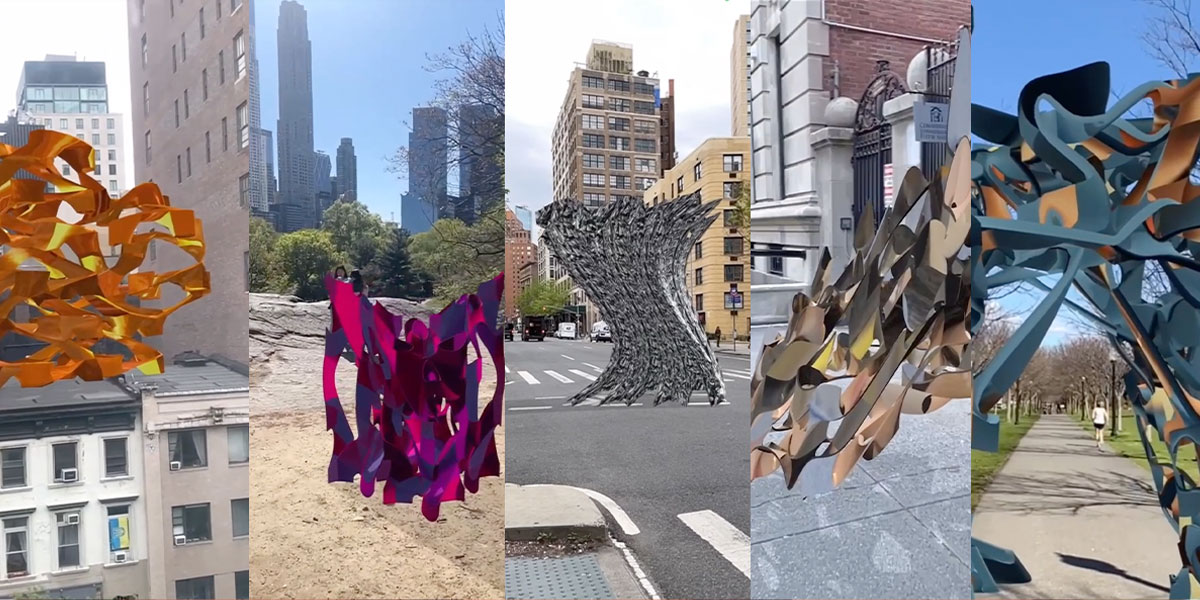Students from the Digital Spatial Narrative course in the Constructive Environments Program at Parsons School of Design are pushing the boundaries of architecture and design by imagining new landscapes in augmented reality! These new landscapes blend digital models with real-world environments, exploring the juxtaposition of physical architecture and digital design in Augmented Reality.
The Digital Spatial Narrative course was facilitated by Scott Chug and explored Digital and Physical modeling techniques that can be used as tools to test plan- and section-based ideas in architecture and interiors as well as to discover new spatial opportunities in these disciplines. Physical modeling
techniques allow for direct exploration of spatial relationships, direct observation of interactions of surfaces and volumes with light, and direct testing of three-dimensional effects. Digital modeling enables further project development with 3D visualization of light, color, materials, spatial relationships, and details. A series of analytical exercises and in-class workshops will allow students to gain an understanding of baseline techniques while strengthening and reinforcing the learning outcomes achieved in core coursework.
Here is a video from the work students did in the course:
School: Parsons School of Design / School of Constructed Environments
Class Spring 2022: Digital Spatial Narrative
Professor: Hyon Woo Scott Chung
Supporter/Collaborator: Maya Georgieva – Senior Director, Innovation Center, Xreality Lab
Students: Ethan Seemungal, Chevy Chanpaiboonrat, Zhenyuan Qun, Yinjie Shi, Mimi Jarrunpattana, Awassada Ariyaphuttarat, Erika Szapiro, Nia Murray, Kura Yoshino, Nam-Y Nguyen, Ceylin Suner, Brenda Chavez

